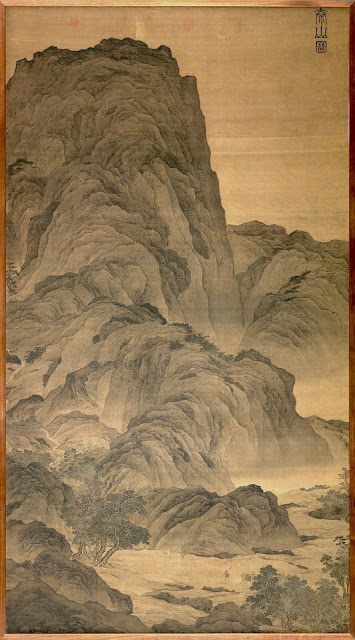JI CHENG / 计成 (1582-1642)
Taishan /泰山 (1,533m - 5,029ft)
China
In Journey to Mount Tai, Ming dynasty, 1368-1644, Harvard Art Museums /Arthur M. Sackler Museum
Ji Cheng / 计成 was a Ming dynasty garden designer. Ji Cheng was born in the 10th year of the reign of the Wanli Emperor (1582) in Tongli, Wujiang County, Jiangsu province. As a youth, Ji Cheng made a name for himself as a landscape painter and private garden designer, he admired two Northern
During his lifetime, he designed numerous private gardens in Southern China.
In his late years, he summarized his lifetime experience into a monograph on landscape design: Yuanye, The Craft of Gardens, 1631. Ji Cheng's Yuanye is the first monograph dedicated to garden architecture in the world. His work has been translated into many languages.
Ji Cheng's thirty-five room former residence at Hueichuan Bridge, Tongli, is now a tourist attraction.
"The garden is created by the human hand, but should appear as if created by heaven."
Taishan /泰山 or Mount Tai (1,533m - 5,029ft) is a mountain of historical and cultural significance located north of the city of Tai'an, in Shandong province, China. The tallest peak is the Jade Emperor Peak (玉皇頂). Mount Tai is of key importance in Chinese religion, being the eastern one of the Sacred Mountains of China. It is associated with sunrise, birth, and renewal, and is often regarded the foremost of the five. According to historical records, Mount Tai became a sacred place haunted by emperors to offer sacrifices and meditate in the Zhou Dynasty before 1,000 BC. A total of 72 emperors were recorded as visiting it. Writers also came to acquire inspiration, to compose poems, write essays, paint and take pictures. Hence, a great many cultural relics were left on the mountain.
Mount Tai is a tilted fault-block mountain with height increasing from the north to the south. It is the oldest example of a paleo-metamorphic formation from the Cambrian Period in eastern China. Known as the Taishan Complex, this formation contains magnetized, metamorphic, and sedimentary rock as well as intrusions of other origins during the Archean Era. The uplift of the region started in the Proterozoic Era; by the end of the Proterozoic, it had become part of the continent. Besides the Jade Emperor Peak, other distinctive rock formations are the Heaven Candle Peak, the Fan Cliff, and the Rear Rock Basin.
Visitors can reach the peak of Mount Tai via a bus which terminates at the Midway Gate to Heaven, from there a cable car connects to the summit. Covering the same distance on foot takes from two and a half to six hours.
To climb up the mountain, one can take one of two routes. The more popular east route starts from Taishan Arch. On the way up the 7,200 stone steps, the climber first passes the Ten Thousand Immortals Tower (Wanxianlou), Arhat Cliff (Luohanya), and Palace to Goddess Dou Mu (Doumugong). The climbing from the First Gate to Heaven, the main entrance bordering on Tai'an town, up the entire mountain can take two and a half hours for the sprinting hiker to six hours for the leisure pace.
2018 - Wandering Vertexes...
Un blog de Francis Rousseau
